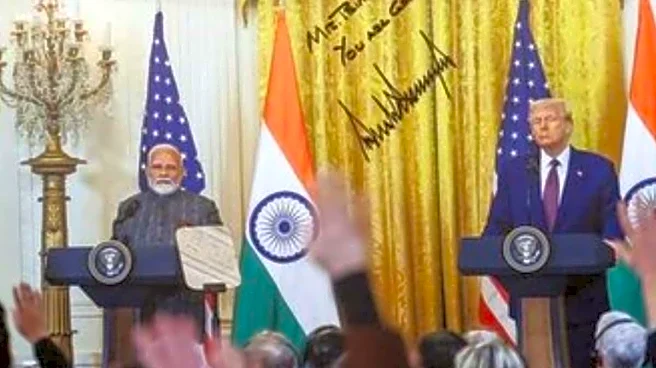North Korean leader Kim Jong Un on Friday unveiled his nuclear-armed military’s most powerful weapons, including a new intercontinental ballistic missile he may be preparing to test in coming weeks. This
came during a massive military parade which also witnessed a presence of several global leaders.
The event not only featured the country’s growing military might but also highlighted Kim Jong Un’s expanding diplomatic influence and his determination to manufacture an arsenal capable of striking both the United States mainland and regional rivals in Asia.
According to North Korean state media, the parade unveiled a new intercontinental ballistic missile (ICBM) named the Hwasong-20, described as the nation’s “most powerful nuclear strategic weapon system” to date.
Standing alongside senior officials from China, Vietnam, and Russia, Kim delivered a speech asserting that his forces must continue evolving into an “invincible power capable of eliminating all threats.” Notably, he refrained from directly mentioning either Washington or Seoul, opting instead to emphasise military strength and unity.
About The Missile
The missile, which has not yet been tested, is powered by a solid-fuel engine made from carbon fibre composite materials. The engine, according to North Korea, has completed nine successful ground tests.
The solid-fuel technology is important because missiles of this type are able to launch much quicker than liquid-fuel missiles, and thus are more difficult to intercept or detect. Experts say that this innovation could be a significant breakthrough in the missile program of Pyongyang.
KCNA stated, “The audience erupted in the most active applause when the column of Hwasong-20 ICBMs, the DPRK’s most superior nuclear strategic weapon system, came onto the square and occupied the track.”
State media reports that the same engine will be deployed in both the Hwasongpho-19 and also the upcoming next-generation Hwasongpho-20 intercontinental missile series. “Pho” means artillery in Korean, and “Hwasong” is the name of the planet Mars.
According to Ankit Panda of the Carnegie Endowment for International Peace, the system will likely undergo testing before the end of the year. “The Hwasong-20 represents, for the moment, the apotheosis of North Korea’s ambitions for long-range nuclear delivery capabilities,” Panda told Reuters.
He added, “The system is likely designed for the delivery of multiple warheads… Multiple warheads will increase stresses on existing U.S. missile defence systems and augment what Kim sees as necessary to achieve meaningful deterrence effects against Washington.”


/images/ppid_59c68470-image-175994003214220457.webp)

/images/ppid_59c68470-image-17599875348413980.webp)

/images/ppid_59c68470-image-176010254179188842.webp)
/images/ppid_59c68470-image-175997254015658934.webp)
/images/ppid_59c68470-image-175997259609515458.webp)
/images/ppid_a911dc6a-image-176004142929517243.webp)

/images/ppid_59c68470-image-17599976217413800.webp)
